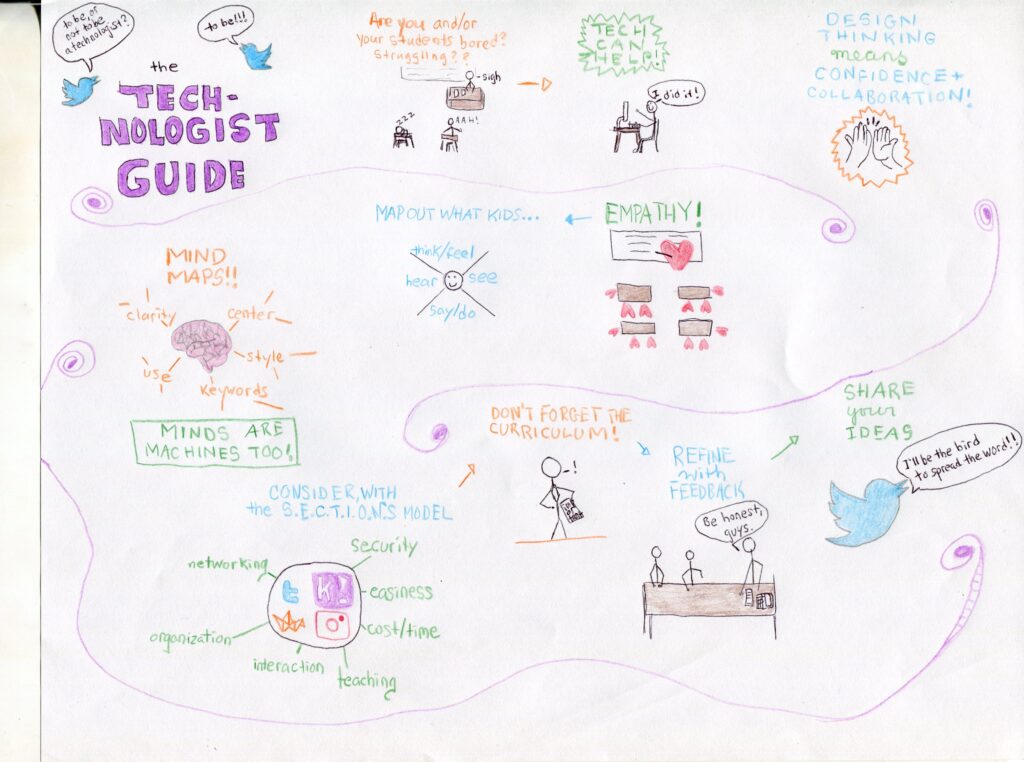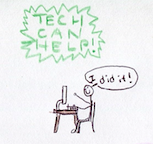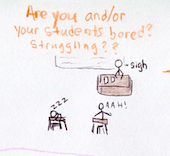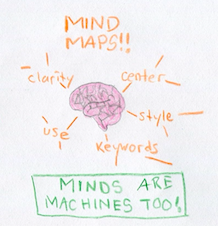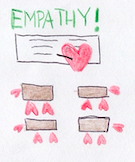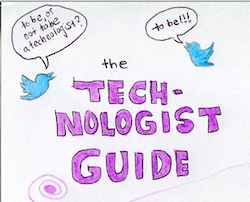
To be an educator of the 21st century, one must embrace the surges of technology and all the gifts it offers the classroom. The Technologist Module outlines various methods to teachers on how to both enhance their students learning with digital assets, and how to navigate the numerous online tools available. To creatively express the module’s message, I concocted a sketchnote. With these drawings, I am eagerly looking forward to discovering more of this digital age, an age of new artistic forms, and an age of new learning.
The module first offers the common scenario of an instructor who has taught the same course repeatedly, and wants to shake things up a little. Most teachers will relate to this. Incorporating technology will remove any tediousness from the lessons, but it more importantly may benefit many of the learners, by accommodating to their needs. Technological aids can be found through talking to colleagues or searching online; the module emphasizes both prior research of the tool before use, and the ability to experiment and branch out to new methods of working. I felt this exciting newness when creating my sketchnote. I had drawn before, but never in this organized, didactic, yet colourful way. I had to be careful with the size of the individual doodles, to make sure they all fit, and I had to consider how to inject as much meaning into each image as possible. I feel better for the experience the undertaking gave me.
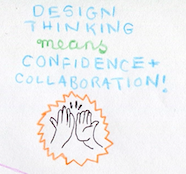
The module has a section on the Design-Thinking Approach. Design-Thinking finds ways to excite learners’ ability to create and push boundaries at their own pace, always with the goal of enhancing their skills and knowledge in creative and collaborative manners. The approach is more student-centered, and as most digital tools give the user control and freedom, the students are able to feel proud of creativity and intellect they may not even know they had. The module has a link that helps teachers understand the different methodologies, which is beneficial to teachers wanting to be fully aware of how their newfound pedagogies function.
The module offers helpful techniques on how to approach and engage with different technologies. The module highlights the importance of empathy, as it is always important to remember what is best for the students when considering new resources. The students need to know their teacher cares for their well-being and comfort as well as their education. The module suggests making an empathy map, which maps out what students feel, think, say, as well as hear and see. It is key also to create mind maps, to be able to focus on the main ideas of tools and learning goals. Another great avenue to evaluating the comprehensive quality of a digital took is the S.E.C.T.I.O.N’s model, which looks at specific components such as security, ease of use, and networking.
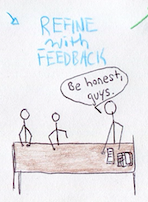
Networking is only possible with communication and collaboration. Educators need a PLN to lean on as their ideas evolve. The module narrows this idea down to ‘Design, Share, and Refine’ three great steps to achieving the best possible use of tech. The internet has transformed communication to be quicker, easier, and more far-reaching. Feedback is essential, whether it is from the effects of lessons on students, their reactions or level of success, or feedback from seasoned educators who are also experimenting and are willing to exchange honest and valuable opinions and ideas.
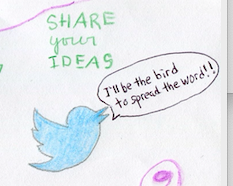
Thank you for reading, and I hope you take time to consider the positive possibilities technology has to offer classrooms, wherever you go!
